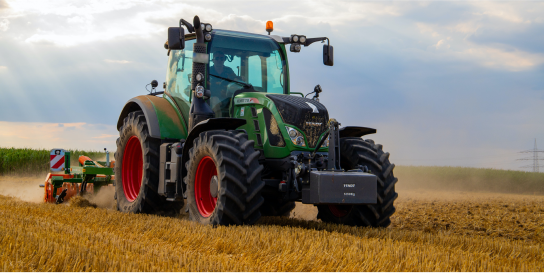Agriculture, being one of the oldest industries, is the backbone of many economies. However, with the world’s population projected to reach 9.7 billion by 2050 (according to a UN report), the need for efficient and sustainable farming practices has never been greater. Additionally, increasing climate change issues such as erratic weather conditions have pushed the need for more sustainable farming practices, including less use of chemicals and maintaining higher standards for farm-animal welfare. The need to produce more food with limited resources has made technology essential in modern agriculture.
Although the use of technology in agriculture is not a new concept, recent advancements have made it more accessible and affordable. In recent years, the agriculture sector has embraced technology, fuelling the transformation in the way agriculture is practiced, leading to increased efficiency, productivity, and sustainability.
From precision agriculture to the use of drones, several technologies are transforming farming practices, with data and connectivity forming the core of the future revolution. For instance, artificial intelligence (AI) is rapidly dominating the world and advancing in the agriculture sector. One such AI-driven method is precision agriculture, which uses various technologies such as GPS, sensors, and drones to monitor crop growth and soil conditions. By collecting and analyzing data, it helps farmers make informed decisions about planting, fertilization, and irrigation. With precision farming, farmers can detect problems early, reducing the use of pesticides and protecting the environment.
Other technologies, such as robotics and farm management software, are also playing a crucial role in revolutionizing agricultural practices. Farm management software allows farmers to manage their operations more efficiently by tracking inventory, monitoring yields, and managing finances. Using this technology, farmers can automate many of their manual tasks associated with farming and save time while reducing errors. Meanwhile, robotic devices perform tasks such as planting, harvesting, and weeding more efficiently and faster, reducing the need for manual labour. For example, autonomous tractors are self-driving vehicles that can be programmed to perform tasks such as tilling, planting, and harvesting. A key aspect of making effective use of such devices is that of remote management of the devices deployed. A real-time, smart, and responsive Network Management System (NMS) is a critical component of such an agricultural ecosystem.
Another technology gaining momentum in the agriculture domain is vertical farming, which involves growing crops in vertically stacked layers. This method of farming uses artificial lighting, hydroponics, and other technologies to grow crops in indoor environments. Vertical farming can help farmers increase crop yields, reduce water usage, and eliminate the need for pesticides.
It is worth mentioning that the rise of technologies in farming is transforming agriculture, making it more efficient, sustainable, and profitable. With the world’s population projected to continue growing, technology will be essential for ensuring food security and reducing the environmental impact of agriculture. Hence, the role of technology in transforming the agricultural sector will remain inevitable, and this trend is expected to continue in the future. For instance, technology like Biotechnology, which uses genetic engineering, can create crops that are more resistant to pests, disease, and environmental stress. This can improve yields and reduce the need for chemical pesticides.
Other technologies, such as climate-smart agriculture technologies, can help farmers adapt to and mitigate the impacts of climate change. These technologies include drought-resistant crops, water-saving irrigation systems, and climate forecasting tools. Moreover, the Internet of Things (IoT) can be used to monitor soil moisture, temperature, and other environmental factors, which can help farmers make real-time decisions about irrigation and other crop management practices. As technology continues to evolve, it is likely that we will see even more innovative solutions to the challenges faced by the agriculture industry.
As such technologies evolve over time, the NMS must also keep pace in both terms of functional and non-functional capabilities in order to realize the benefits.

